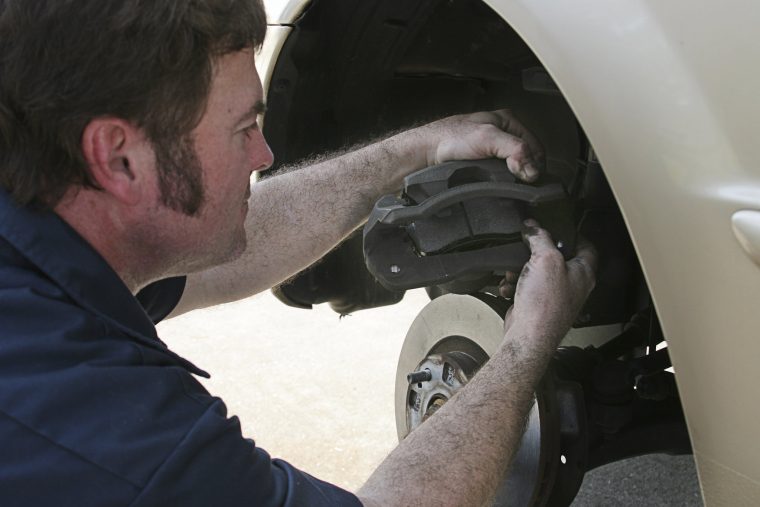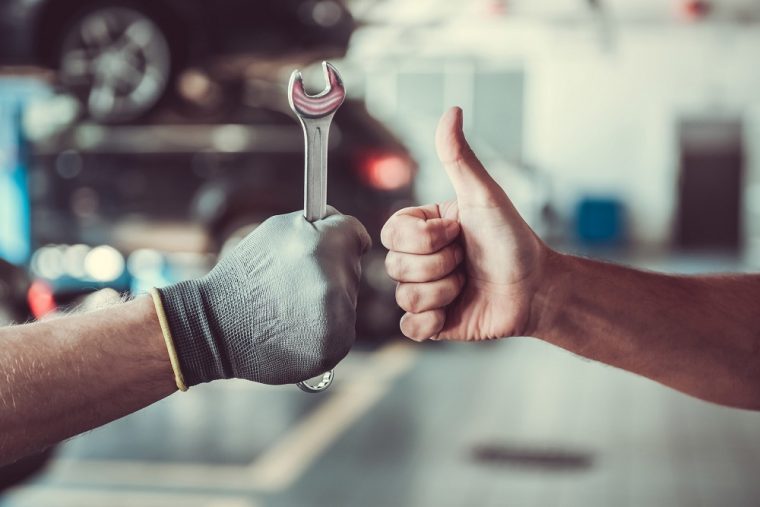What Does It Mean to Bleed Brakes?
When it comes to brake maintenance, you’re probably familiar with the importance of replacing the brake pads. You might not know what “bleeding the brakes” means, however. Here’s a brief overview of what this brake maintenance task is and how to do it.
Expert Service: Schedule a brake maintenance appointment for your car
What it is
According to Your Mechanic blogger Mark Vallet, bleeding the brakes is the process of removing air from the brake line. It helps keep the braking system functioning accurately and smoothly each time your foot presses down on the brake pedal. Per Vallet, most mechanics advise performing this routine maintenance every 2 to 3 years.
How to do it
Bleeding the brakes can be a tricky procedure that is usually best to leave to a certified technician at a dealership. However, here are the basic steps to performing this service, in case you’re curious.
Prep steps
First, check the owner’s manual to determine what brake fluid your vehicle needs. Per Car and Driver’s Tony Quiroga, you’ll typically need two or three 12-ounce cans of brake fluid. You’ll also want to purchase a special tool called a bleeder wrench.
Next, jack up your vehicle. To get started with the process, locate the brake bleeder screw behind each brake. Use the bleeder wrench to gently loosen each screw, then tighten them again. Per Quiroga, you’ll bleed one brake at a time to prevent air from getting into the system.
Put the end of a small piece of 1/4-inch diameter clear tubing over one of the bleeder screws. Then place the other end of the hose in a jar or other container to catch the fluid.
Involve a friend
Have a friend get behind the wheel of your car and pump the brake pedal a few times when you tell them to. They should pump the brakes until they feel solid resistance, then keep their foot pressed to the pedal. At this point, you’ll want them to shout “pressure!” to let you know this step has been achieved.
Next, use the wrench to open the bleeder screw a bit, as Quiroga advises. You should see brake fluid exiting the tube into the catch container. The brake pedal should start lowering toward the floor while you’re doing this.
When the pedal reaches the floor, have your helper shout a command like “down!” or “floor!” Immediately tighten the bleeder screw. You’ll then need to check the master cylinder reservoir’s fluid level. If you notice that it’s low, top it off with new brake fluid.
Final steps
Repeat the steps above with each of the other three brakes. As the last step, have your assistant press down on the brakes forcefully, then suddenly release the pressure. While they’re doing so, monitor the fluid in the master cylinder reservoir. Per Quiroga, you’ll see a slight disturbance in the fluid if the brake bleed was done right.
If you notice a significant disturbance in the fluid, this usually indicates air bubbles. That means you’ll need to perform the bleed again.
Learn what to do if your car’s brakes lock up during a drive. Then discover what makes Brembo brakes so special.
Manufacturer Perks: Find out more about auto part warranties

Whitney Russell resides in Dayton, though her spirit can be found beach-bumming in Puerto Rico (the land of her half-Puerto Rican heritage). When not crafting car-related content, she can be found chasing after the most amazing toddler in the world, watching her “beaver” of a husband build amazing woodworking projects, hanging out with two crazy dogs, and visiting family and friends. She also enjoys traveling, crafting, and binge-watching period dramas when time allows. See more articles by Whitney.




